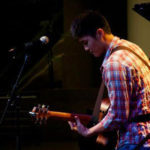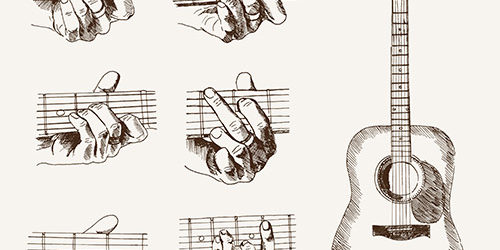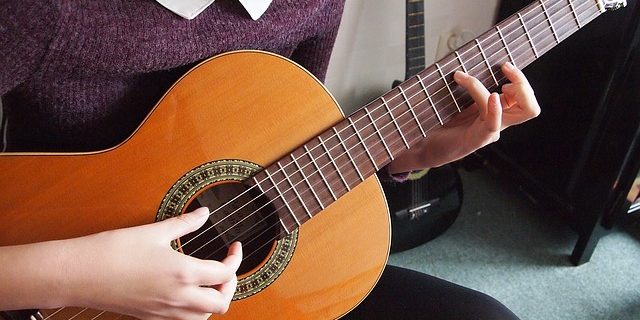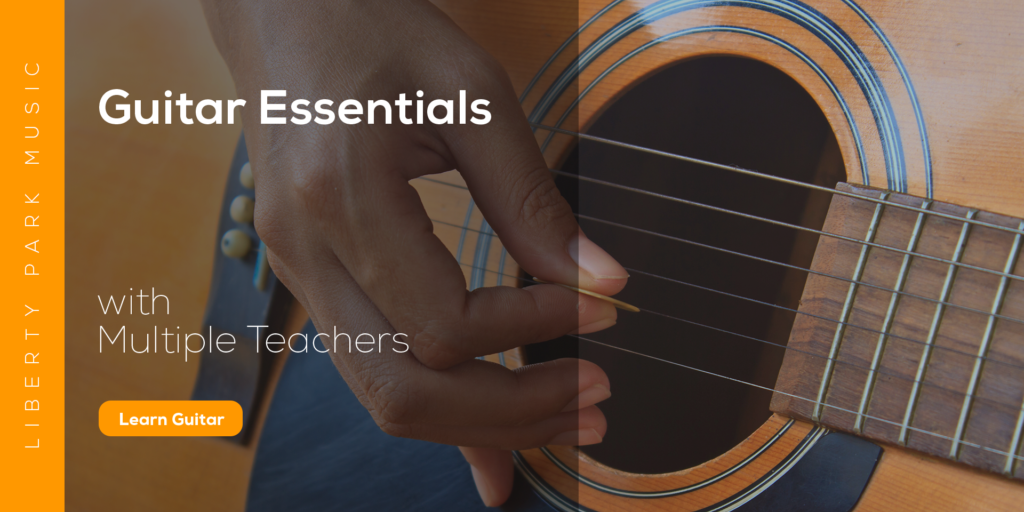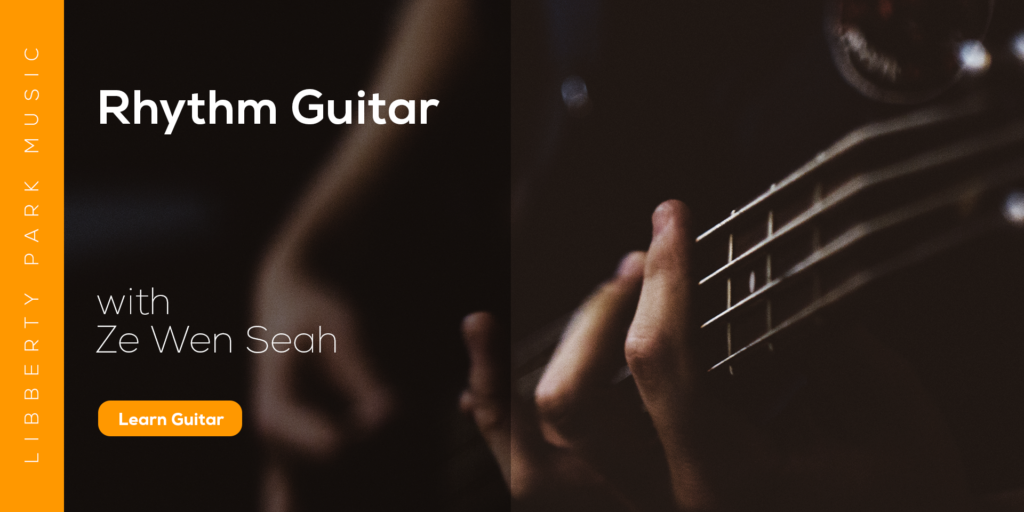Without a doubt, modern music has come a long way since the first musical recordings made in the late 19th century, but certain forms of music from that time period still greatly influence modern compositions. One genre that has influenced nearly every genre of Western music since the 19th century is simply known as “the blues.”
The blues has become an integral part of jazz, R&B, rock, soul, country music, and of course, modern day pop music. It is widely regarded as the foundation for nearly all American popular music that came after 1900.
The fact that the blues has played a vital role in shaping almost all forms of Western music is exactly why it is worth studying. Through studying the music that influenced the modern music we love, we can become more skilled and knowledgeable musicians ourselves. Through this exploration, we can pick up songwriting, improvisation, and harmonic and melodic ideas that would have never occurred to us previously. This study of history can also explain why verses of songs are melodically similar in nature, or why the use of string bending is so common amongst guitarists. Just like how we study anthropology to expand our knowledge on humanity, we should also study music history to expand our knowledge on the evolution of music.
The blues as a genre has gone through many changes over the decades and each era and style can be characterized by different artists and songs. In this new article series, we will explore the different eras and styles of the blues that have played a vital role in shaping modern music. Some of the styles we’ll explore include Delta blues, Classic female blues, and Urban blues. Our goals at the end of this series are to have an understanding of the different styles of the blues, how they came to be, and to draw inspiration from the different styles to influence our own playing.
Let’s first begin by defining what the blues genre actually is and exploring its origins.
What is the blues?
The blues is a secular form of music that has roots in early African American folk music.
Using a very specific musical definition, the blues can be defined as a composition with a specific chord progression known as the 12-bar blues. Written in Roman numeral notation, the progression is as follows:
|I |I |I |I |
|IV |IV |I |I |
|V |IV |I |I |
If we use this chord progression in the key of C, it will look like this:
|C |C |C |C |
|F |F |C |C |
|G |F |C |C |
Of course, there are often slight variations to the exact chords of the 12-bar blues, but they generally follow this structural outline.
The lyrics over the 12-bar blues often have a call-and-response nature following an AAB text pattern where bars 5-8 repeat the text from bars 1-4, sometimes with slight variations. Bars 9-12 are the turnaround section, and in this section, the lyrics rhyme with the lyrics of the first 8 bars, but both the lyrics and melody will often be completely different. This AAB text form, when placed on the above chord progression looks as follows:
|I |I |I |I |
A text
|IV |IV |I |I |
A text, maybe modified
|V |IV |I |I |
Turnaround B text
Another unique musical quality of the blues is the use of pentatonic scales and “blue notes.” Blue notes are usually either a flattened 3rd and 7th scale degree of the major scale. Microtonal sharpening of notes are also used, and this will produce notes that lie between the traditional 12 notes of the Western chromatic scale. For example, in the context of the chromatic scale, C and Db lie a semitone apart, however a note that lies between these two notes can be produced using a microtonal bend. This use of microtonal bends is the reason why the main instruments used in the blues are vocals, stringed instruments, and wind instruments. It is very difficult, if not impossible, to produce these notes on an instrument like a piano. Apart from microtonal bends, chromaticism in melodies is also very common and chromatic notes are often used as “passing” notes.
Other forms of the blues exist in addition to the 12-bar blues, including the 8-bar and 16-bar blues. There are also many blues songs that don’t follow the standard 12, 8, or 16-bar blues. However, as the 12-bar blues continues to be the most common form of the blues, this is the chord progression that is played when musicians agree to sit down together to jam over the blues.
A looser definition of the blues genre relates to the name of the genre and the emotion of “feeling the blues.” This could mean songs that evoke a feeling of melancholy or sadness, or really any song that evokes a deep emotional connection to the music being played. This looser definition was common in the U.S. by the mid-1800s and continues to be a definition that many people use. However, while slower songs are often considered as the most representative form of the blues, there are many examples of upbeat and cheerful blues tunes. A great example of this is “Johnny B. Goode” by Chuck Berry.
As you can see by now, it is actually pretty hard to define the blues as a genre. The genre is ever evolving and what is considered the blues today may be considered as another genre tomorrow. The last and by far the most commonly used definition of the blues is simply this: whatever listeners, performers, and marketers call the blues, is the blues. The blues used to be defined as music sung by old black men on their dusty southern porches, then as a black woman singing about her troubles with a small jazz band as accompaniment, and these days it can be defined as the music a white man plays on his blazing electric guitar in a theatre packed with 7000 people in the city of Los Angeles. Due to the ever evolving nature of the genre, historians now define the blues as whatever a substantial audience understood the genre to be in any particular era or region. Just like the definition of the blues, the origins of the blues is just as murky.
Origins and the Proto-Blues (1800s)
Not much can be authoritatively said about the origin of the blues or even where the term “the blues” came from as the genre first arose during the era of slavery in the United States. Even after the 1863 Emancipation Proclamation (an executive order issued by American president Abraham Lincoln that freed all slaves), not many records of the early forms of the blues were written down due to poor literacy rates in African American communities. Regardless, we’ll use what we do know to explore the origins of the genre.
An accepted theory amongst historians is that many of the early traditional blues songs were adopted from African American styles of folk music that were defined as “work songs” or “field hollers.” We can think of these styles of music as “Proto-Blues.”
A defining aspect of work songs were their use of call-and-response phrases. These were phrases often sung by one singer which would then be responded with a group of singers. A great example of a work song that features a call-and-response is “I Be So Glad… When the Sun Goes Down.” During this time, the responses often had the same lyrical content as the call, with maybe slight variations to one or two words.
The call-and-response structure in the context of a standard 12-bar blues would usually have the lyrical call in the first four bars, then the repeated response in the next four bars, and finally the turnaround in the last four bars. The lyrical content of the turnaround section is usually different but related and often rhymes with the first eight bars. It can be thought of as a response to the first call-and-responses. Throughout the entire 12-bars, instruments also play short responses to vocal lines. As you can see, the call-and-response nature of the blues is present even in individual sections of the entire 12-bar progression.
Here are two songs from different eras that demonstrate the use of call-and-response. As you listen to the recordings of these songs, you’ll also hear the instruments respond to vocal lines.
Give Me One Reason - Tracy Chapman (1995)
Give me one reason to stay here
And I'll turn right back around (bars 1-4)
Give me one reason to stay here
And I'll turn right back around (bars 5-8)
Said I don't want to leave you lonely
You got to make me change my mind (bars 9-12)
Crossroad Blues - Robert Johnson (1936)
I went to the crossroad, fell down on my knees (bars 1-4)
I went to the crossroad, fell down on my knees (bars 5-8)
Asked the Lord above, "Have mercy now
Save poor Bob if you please" (bars 9-12)
Many of the early proto-blues songs were slow, free-form vocal improvisations without fixed melodies or even a fixed number of bars. In this proto-blues era, the use of microtonal slides and melismas (vocal runs over a single syllable of a word) were already common leading to the use of these techniques in instruments. This resulted in instruments like the guitar, vocals, harmonica, and horn instruments to be commonly used in the blues as these instruments allow you to use the “in-between” notes that aren’t readily available in the standard 12 notes of Western music. This is why guitar techniques like bends, slides, and vibratos are so common amongst blues guitarists. As the slaves began to adopt different instruments into their culture, the use of instrumental calls or responses also started to become commonplace.
The piano was also commonly used later on in the blues, but since it is difficult, and oftentimes impossible, to perform microtonal slides and bends on the piano, many pianists resort to using chromatic grace notes to create the illusion of slides and microtones. This resulted in the common usage of chromatic passing notes in the blues. A great example of a melody that uses chromaticism in the blues is “Blue Monk” by Thelonious Monk.
The use of drums and percussion instruments were uncommon in proto-blues as African American slaves were often prohibited from using traditional African percussion instruments (but many slaves did build their own percussion instruments in secret). However, stringed instruments were not banned, which led to their widespread adoption. Slaves from West Africa were already very familiar with stringed instruments as West Africa has a deep history with stringed instruments. This led the slaves to construct their own banjos and fiddles based on African instruments and playing techniques, and these techniques eventually found their way to the violin and guitar.
Proto-blues had the opportunity to develop further beyond its traditional work songs as almost all musical performances on southern plantations were performed by slaves. This led to the adoption of European instrumental songs amongst the early African American musicians which helped to add some additional structure to the proto-blues music. Another factor that played a role in the development of proto-blues was the popularity of minstrel shows in the 1840s. These were shows put on by both white and black performers that had musical performances, comedic skits, dancing, and variety acts. From a modern day point of view, these shows were extremely racist in nature as the entire comedic theme of these shows was based on lampooning African Americans as dim-witted, foolish, lazy, bafoonish, and superstitious in nature. Most of the outlandish black characters in the show were white actors wearing blackface. Regardless of the racist nature of these shows, it did give the African Americans who participated in the musical performances an opportunity to adopt elements of minstrel songs with their rural songs and vice versa. This led to a back-and-forth development of these southern styles of music.
Another factor that helped develop proto-blues was the increased popularity of juke joints after the Emancipation Proclamation. These were places where African Americans could go to drink, dance, gamble, and listen to music after a hard day of work. These juke joints also helped to change the proto-blues from group performances to individual acts that focused more on originality and individual expression.
Unfortunately, much of this early rural music went unrecorded before the 1920s, so what is known about proto-blues music is based on limited information. The earliest songs that can be regarded as proto-blues include “Make Me a Pallet on Your Floor,” “Going Down the Road Feeling Bad,” “Alabama Bound,” and “Hesitation Blues.” Of these five songs, the only song that has the 12-bar blues progression is “Hesitation Blues,” so it’s safe to say the adoption of the 12-bar blues at this point was not common and “the blues” had not yet been solidified as a genre. Much of this music was simply called rural music.
The earliest known songs with the word “blues” in their title published by the sheet music industry included songs like “I Got The Blues (1908)” and “Dallas Blues (1912).” These two songs are considered ragtime songs, which is another genre that developed around the same time as the blues, but the publishing of these two songs had large significance. This was during a time when recorded music wasn’t an established industry yet, so when people “bought music” in those days, they bought sheet music to tunes and they either had to play the music themselves or hire musicians to play. This means that the sheet music industry during that time was the music industry giant (like record labels in the modern era), and having them publish songs with the term “blues” in their titles helped to popularize the term.
What came next?
The blues began to get mainstream attention in the 1920s with the rise of the recording industry and growing popularity of Classic female blues singers. This marked the beginning of a new era for the blues genre which we will explore in our following article. Check back soon on Liberty Park Music’s blog or subscribe to our newsletter to get an update on future articles in this series! We have yet to explore the Delta, Urban, Soul, and Psychedelic Blues eras.
References
- Bolden, Tony. Afro-Blue: Improvisations in African American Poetry and Culture. University of Illinois Press, 2004.
- Brozman, Bob. “The Evolution of the 12 Bar Blues Progression.” Bob Brozman: The Evolution of the 12 Bar Blues Progression, www.bobbrozman.com/tip_evol12bar.html.
- Cohn, Lawrence, and Mary Katherine Aldin. Nothing but the Blues: the Music and the Musicians. Abbeville Press, 1993.
- “How To Play Blues Guitar.” Call and Response | How To Play Blues Guitar, how-to-play-blues-guitar.com/blues-concepts/call-and-response/.
- Oliver, Paul. Blues off the Record: Thirty Years of Blues Commentary. Da Capo Press, 1988.Wald, Elijah. “Blues.” Oxford Music Online, 2012, doi:10.1093/gmo/9781561592630.article.a2223858.
Learn with LPM
If you are looking to feel comfortable with playing basic major and minor chords, power chords, and apply different strumming techniques to your practices with Ze, check out his course called Rhythm Guitar
About the Author: Ze
Ze first began his journey playing original music and top 40s pop tunes around the country's popular venues. Eventually, through the music of John Mayer, he found a strong attraction to blues music. Ze has years of experience teaching beginners and intermediate guitarists. Currently with Liberty Park Music he is teaching Introduction to Guitar Playing for Complete Beginners, Rhythm Guitar to learn about strumming, chords and more, Guitar Essentials as a fast-track review course, and lots of Song Lessons on pop and rock hits.


